Interesting. No issues with it sucking co2 from above the liquid line with that method? I don't use those in my fermenter but rather the kegI just cut both sides of the aluminum pickup tube with the grinder twice to allow better flow. The tube wants to stick to the fermenter wall when under pressure if not.View attachment 617319
You are using an out of date browser. It may not display this or other websites correctly.
You should upgrade or use an alternative browser.
You should upgrade or use an alternative browser.
New England IPA "Northeast" style IPA
- Thread starter Braufessor
- Start date

Help Support Homebrew Talk:
This site may earn a commission from merchant affiliate
links, including eBay, Amazon, and others.
Loud Brewing
Well-Known Member
Yeah they work so good, I use them in all my kegs too. No, I have never had any issues with it sucking c02 from above, it intakes from right below the ball just like when in the keg.Interesting. No issues with it sucking co2 from above the liquid line with that method? I don't use those in my fermenter but rather the keg
marchuk96
If you brew it...they will come!!
This was the first time using this hop for me which is why I used it on its own...I did get some of the dank diesel characters ur talking about but also some passion fruit and maybe a touch of the "fruity pebbles" ..I feel like its a very potent hop with low alphas and could be the next it hop...either on its own or in combo with others...i love itHave you used that hop before?
The descriptions seem like they should good in a NEIPA. I tried it in a golden ale to get a feel for the flavor, I did not get any fruity pebbles. The aroma is more dank with a diesel like smell. I have in my notes that there a bit of funk too.
I also bought some experimental 6297 and that one did have a candy grape flavor. Either the listed AA was wrong or the candy flavor made the beer seem sweet.
Have another golden fermenting now with the two together to see how they pair.
I also ferment in kegs and have also had good success dry hopping after FG and crashing. When you open the corny top to add dry hops(or ideally right before you open it) blast CO2 into the gas post of the keg. When you open the corny top you'll have positive pressure where the air is being pushed out, thereby not allowing oxygen in. Don't turn the gas off until you've closed the keg back up. This may not reduce oxygen exposure 100% but should do a pretty good job and is the way a lot of commercial breweries add dry hops who don't have the fancy hop cannon contraptions.
Thanks. I don’t think I’ve ever had an oxidized beer before... and I don’t know how based on everyone stressing how critical low oxygen techniques are for this style. Ive even had clogged poppets during transfer before where I’ve literally had to figure out on the fly what the hell was going on... gas spraying beer everywhere, keg lid open, sanitized hands in and out of the keg.... once I got it all figured out and xferred to serving keg I knew the beer was ruined. That beer stayed one of the brightest of all my batches. Unless there’s some other ill effects of oxidation, I don’t know how I’m avoiding it without all of these critical techniques.
VirginiaHops1
Well-Known Member
Thanks. I don’t think I’ve ever had an oxidized beer before... and I don’t know how based on everyone stressing how critical low oxygen techniques are for this style. Ive even had clogged poppets during transfer before where I’ve literally had to figure out on the fly what the hell was going on... gas spraying beer everywhere, keg lid open, sanitized hands in and out of the keg.... once I got it all figured out and xferred to serving keg I knew the beer was ruined. That beer stayed one of the brightest of all my batches. Unless there’s some other ill effects of oxidation, I don’t know how I’m avoiding it without all of these critical techniques.
People often say that they've never had oxidation because their beer is pretty good, but how would you know that without tasting the exact same batch both ways(under more optimal O2 conditions)? With how fast homebrew is drank, I don't think it's hard to avoid the 'wet cardboard' stage of oxidation unless your process is really bad but that doesn't mean flavor isn't affected at all. Personally, I like to do whatever I can(within reason) to keep my O2 exposure as low as possible
Dgallo
Instagram: bantam_brews
I’m sure it is happened to you before and you just didn’t know what to look for. Cardboard flavors or even cidery flavors are signs of it. Color is the main thing too. The color will change before the flavor does. Here are a couple pictures to show.Thanks. I don’t think I’ve ever had an oxidized beer before... and I don’t know how based on everyone stressing how critical low oxygen techniques are for this style. Ive even had clogged poppets during transfer before where I’ve literally had to figure out on the fly what the hell was going on... gas spraying beer everywhere, keg lid open, sanitized hands in and out of the keg.... once I got it all figured out and xferred to serving keg I knew the beer was ruined. That beer stayed one of the brightest of all my batches. Unless there’s some other ill effects of oxidation, I don’t know how I’m avoiding it without all of these critical techniques.
Good color, no oxidation
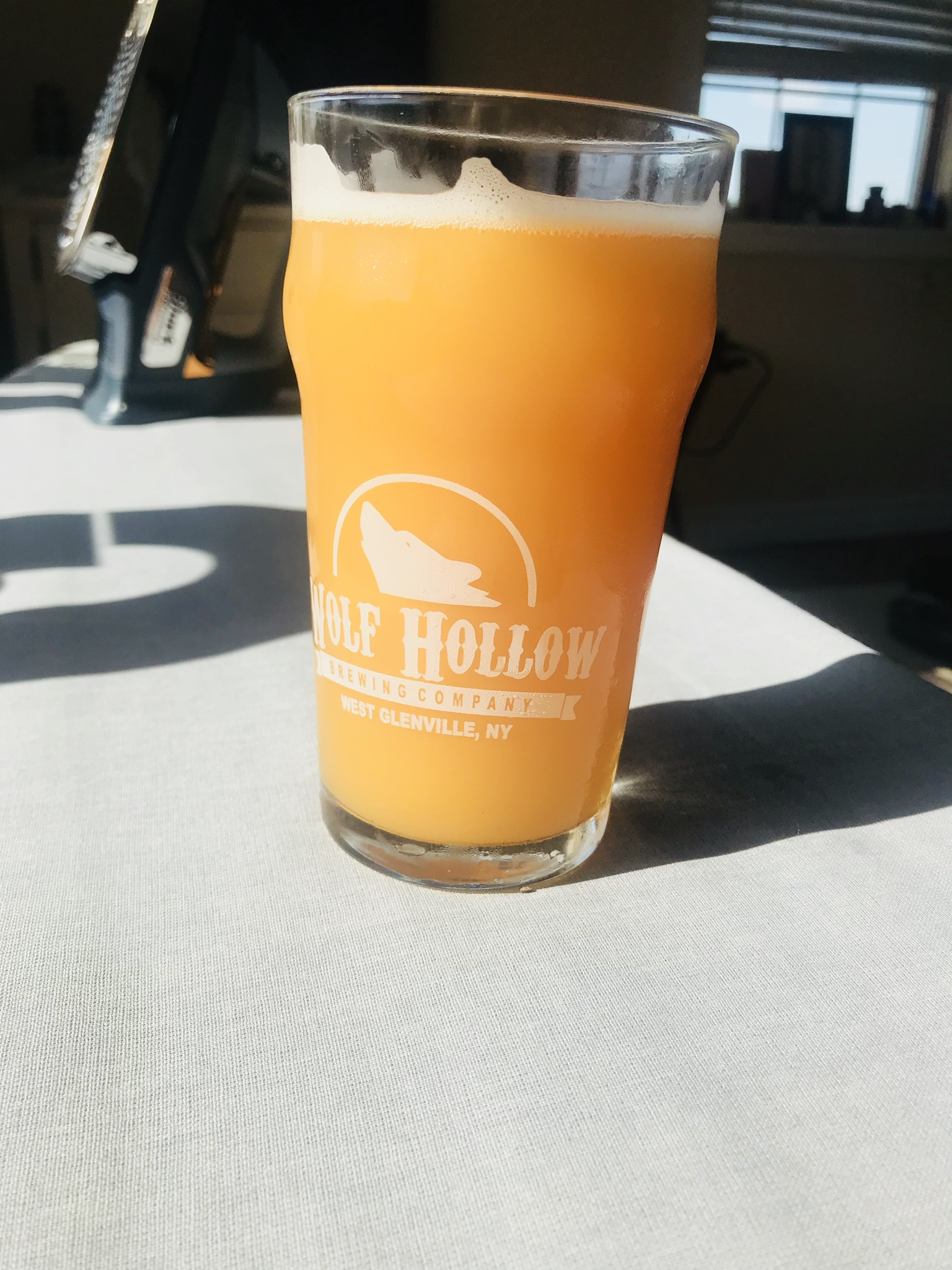
oxidized
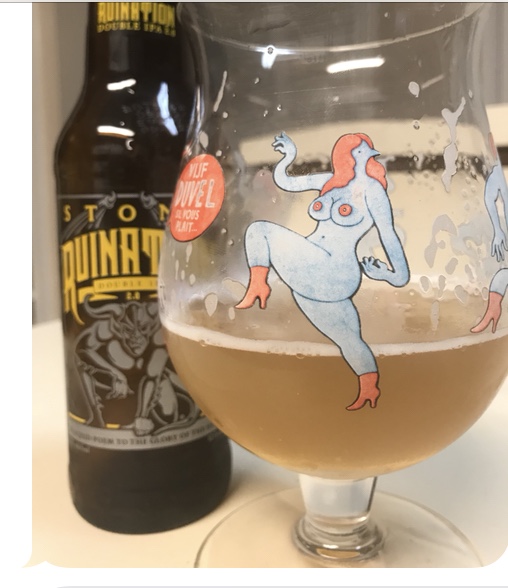
Shot from being oxidatized
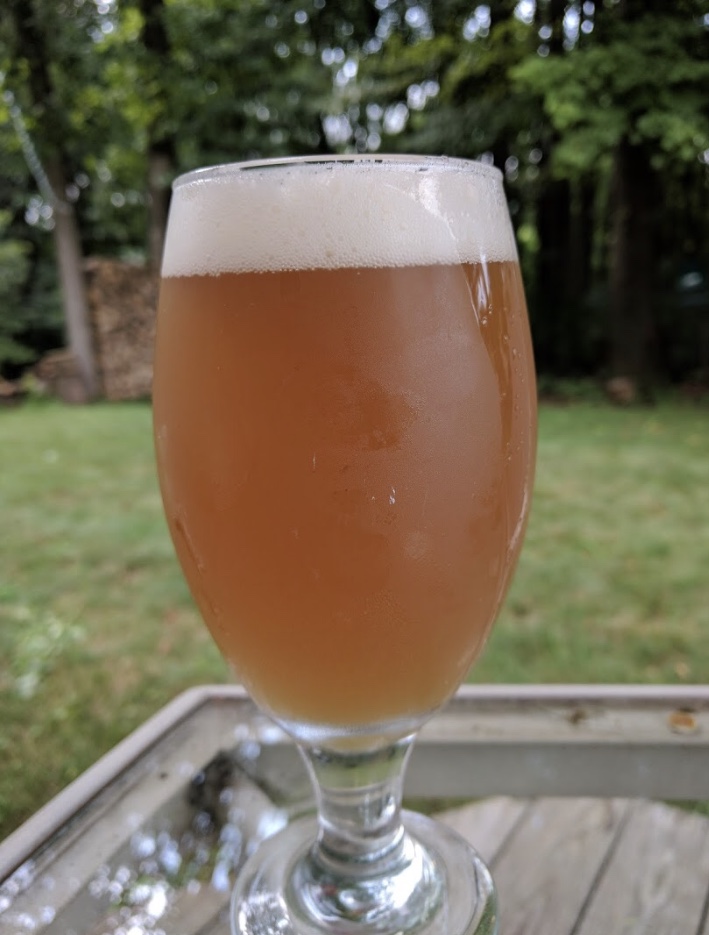

$7.79 ($7.79 / Count)
Craft A Brew - LalBrew Voss™ - Kveik Ale Yeast - For Craft Lagers - Ingredients for Home Brewing - Beer Making Supplies - (1 Pack)
Craft a Brew

$53.24
1pc Hose Barb/MFL 1.5" Tri Clamp to Ball Lock Post Liquid Gas Homebrew Kegging Fermentation Parts Brewer Hardware SUS304(Gas MFL)
Guangshui Weilu You Trading Co., Ltd

$28.98
Five Star - 6022b_ - Star San - 32 Ounce - High Foaming Sanitizer
Great Fermentations of Indiana

$479.00
$559.00
EdgeStar KC1000SS Craft Brew Kegerator for 1/6 Barrel and Cornelius Kegs
Amazon.com

$76.92 ($2,179.04 / Ounce)
Brewing accessories 1.5" Tri Clamp to Ball Lock Post Liquid Gas Homebrew Kegging Fermentation Parts Brewer Hardware SUS304 Brewing accessories(Gas Hose Barb)
chuhanhandianzishangwu

$22.00 ($623.23 / Ounce)
AMZLMPKNTW Ball Lock Sample Faucet 30cm Reinforced Silicone Hose Secondary Fermentation Homebrew Kegging joyful
无为中南商贸有限公司

$719.00
$799.00
EdgeStar KC2000TWIN Full Size Dual Tap Kegerator & Draft Beer Dispenser - Black
Amazon.com

$44.99
$49.95
Craft A Brew - Mead Making Kit – Reusable Make Your Own Mead Kit – Yields 1 Gallon of Mead
Craft a Brew

$159.99 ($26.66 / Count)
3M High Flow Series System BREW120-MS, 5616001, For Brewed Coffee and Hot Tea, Valve-in-Head Design
SpaceCityProviders

$58.16
HUIZHUGS Brewing Equipment Keg Ball Lock Faucet 30cm Reinforced Silicone Hose Secondary Fermentation Homebrew Kegging Brewing Equipment
xiangshuizhenzhanglingfengshop

$20.94
$29.99
The Brew Your Own Big Book of Clone Recipes: Featuring 300 Homebrew Recipes from Your Favorite Breweries
Amazon.com

$53.24
1pc Hose Barb/MFL 1.5" Tri Clamp to Ball Lock Post Liquid Gas Homebrew Kegging Fermentation Parts Brewer Hardware SUS304(Liquid Hose Barb)
yunchengshiyanhuqucuichendianzishangwuyouxiangongsi

$176.97
1pc Commercial Keg Manifold 2" Tri Clamp,Ball Lock Tapping Head,Pressure Gauge/Adjustable PRV for Kegging,Fermentation Control
hanhanbaihuoxiaoshoudian

$10.99 ($31.16 / Ounce)
Hornindal Kveik Yeast for Homebrewing - Mead, Cider, Wine, Beer - 10g Packet - Saccharomyces Cerevisiae - Sold by Shadowhive.com
Shadowhive

$33.99 ($17.00 / Count)
$41.99 ($21.00 / Count)
2 Pack 1 Gallon Large Fermentation Jars with 3 Airlocks and 2 SCREW Lids(100% Airtight Heavy Duty Lid w Silicone) - Wide Mouth Glass Jars w Scale Mark - Pickle Jars for Sauerkraut, Sourdough Starter
Qianfenie Direct
VirginiaHops1
Well-Known Member
Even before the color goes to hell like that minor oxidation will dull the hop flavors and aroma. NickC, it's a hobby and supposed to be fun so just do it however you enjoy doing it but since you're fermenting in kegs you could keep your system buttoned up real tight with minimal extra effort.
You're not. It just may not bother you muchThanks. I don’t think I’ve ever had an oxidized beer before... and I don’t know how based on everyone stressing how critical low oxygen techniques are for this style. Ive even had clogged poppets during transfer before where I’ve literally had to figure out on the fly what the hell was going on... gas spraying beer everywhere, keg lid open, sanitized hands in and out of the keg.... once I got it all figured out and xferred to serving keg I knew the beer was ruined. That beer stayed one of the brightest of all my batches. Unless there’s some other ill effects of oxidation, I don’t know how I’m avoiding it without all of these critical techniques.
Dgallo
Instagram: bantam_brews
I was showing the color since he stated he didn’t think he’s tasted oxidation, that makes me think he wouldn’t be able to identify minor oxidation flavors. Plus most people will show signs of oxidation long before they can taste it. So the slight color change is the first indicatorEven before the color goes to hell like that minor oxidation will dull the hop flavors and aroma. NickC, it's a hobby and supposed to be fun so just do it however you enjoy doing it but since you're fermenting in kegs you could keep your system buttoned up real tight with minimal extra effort.
Northern_Brewer
British - apparently some US company stole my name
Folks here may be interested in two posts I've made over on the Brew Science board about hop oil contents, including a rip of linalool and geraniol content from the YCH list. Will Brewer's Gold, Taurus, Loral and Merkur become the hot new varieties for hoppy beers? Maybe not, but they could be useful for bulking out your hop blend at a reasonable price.
beervoid
Hophead & Pellet Rubber
More juicy info thanks for sharing..Folks here may be interested in two posts I've made over on the Brew Science board about hop oil contents, including a rip of linalool and geraniol content from the YCH list. Will Brewer's Gold, Taurus, Loral and Merkur become the hot new varieties for hoppy beers? Maybe not, but they could be useful for bulking out your hop blend at a reasonable price.
I have heard mixed results from Loral, they got a CRYO version of it though so it must have some magic.
That was my thoughts as well, malted oats most part but still 50% is ridiculously high and these guys are masters at marketing.
Just like some breweries claim to dry hop with 6 pounds per barrel... I really wonder how much of this is true and how much is just marketing.
Don't forget golden naked oats too. I'm not convinced they dont sub these out for honey or similar crystal in this 50%+ beers.
Even before the color goes to hell like that minor oxidation will dull the hop flavors and aroma. NickC, it's a hobby and supposed to be fun so just do it however you enjoy doing it but since you're fermenting in kegs you could keep your system buttoned up real tight with minimal extra effort.
Ahh, dull hop flavors. Now I have experienced that too many times... Me saying I haven’t experienced oxidation was only in regard to the two commonly referred symptoms of color and cardboard flavor. Don’t get me wrong, I’m still aiming to keep exposure low or eliminated - one of the main reasons I switched to fermenting in kegs was for closed transfers. What are other symptoms of oxidation?
This may be why I haven’t consistently gotten the juice bombs. My theory was stale hops.
Northern_Brewer
British - apparently some US company stole my name
My theory was stale hops.
Hops become stale due to oxidation....
Hops become stale due to oxidation....
I guess I didn’t realize they can become stale during the brew process. I’d always taken that statement as they can become stale/oxidized because of poor storage.
jakturner
Well-Known Member
I’m sure it is happened to you before and you just didn’t know what to look for. Cardboard flavors or even cidery flavors are signs of it. Color is the main thing too. The color will change before the flavor does. Here are a couple pictures to show.
Good color, no oxidation
View attachment 617362
oxidized
View attachment 617363
Shot from being oxidatized
View attachment 617365
What’s your grain bill for that first picture? I’m liking that color.
+1What’s your grain bill for that first picture? I’m liking that color.
Dgallo
Instagram: bantam_brews
If I recall correctly it wasWhat’s your grain bill for that first picture? I’m liking that color.
10lb Pilsner
4lb Maris
2 lb flaked wheat
.25lb cara Munich
Don’t have it in my notes.
Last edited:
beervoid
Hophead & Pellet Rubber
Beers looks orange juicy.
Aside from the right grainbill the colour pops extra due to the fall of the light on the beer.
Dgallo
Instagram: bantam_brews
Using a late summer sunset to my advantage for sureBeers looks orange juicy.
Aside from the right grainbill the colour pops extra due to the fall of the light on the beer.
jakturner
Well-Known Member
Using a late summer sunset to my advantage for sure
Is caramunich something you regularly use? I’ve tried a quarter lb of honey, crystal 10 and 20, and aromatic malt. I think I like the aromatic the most. Maybe I’ll give caramunich a try, I’m guessing you use caramunich l? Caramunich ll is probably too dark.
Dgallo
Instagram: bantam_brews
I use it pretty often. When I use it is cara Munich 1 but I’ve done 2 on occasion but it’s only slightly darker. My typical NEIPA grain bill uses a .5lbs of honey but I do switch it up from time to time with crystals, and biscuit just to have some variations between them.Is caramunich something you regularly use? I’ve tried a quarter lb of honey, crystal 10 and 20, and aromatic malt. I think I like the aromatic the most. Maybe I’ll give caramunich a try, I’m guessing you use caramunich l? Caramunich ll is probably too dark.
beervoid
Hophead & Pellet Rubber
Do you notice any differences in flavor from them?I use it pretty often. When I use it is cara Munich 1 but I’ve done 2 on occasion but it’s only slightly darker. My typical NEIPA grain bill uses a .5lbs of honey but I do switch it up from time to time with crystals, and biscuit just to have some variations between them.
I'm of the opinion they dont reallly matter in these small quantities and are used purely for color.
I've tried crystal malts, vienna, munich and melanoidin..
Dgallo
Instagram: bantam_brews
I can notice the difference. Honey seems to give me the most sweetness, Munich the most on the nose and true malt character and biscuit is just a bit cracker and slight malt. If you up them all to .5-.75lb it will be very present. Honey malt is my favorite in a NEIPA, a mix of biscuit and Munich when I do west coastsDo you notice any differences in flavor from them?
I'm of the opinion they dont reallly matter in these small quantities and are used purely for color.
I've tried crystal malts, vienna, munich and melanoidin..
Last edited:
jakturner
Well-Known Member
Do you notice any differences in flavor from them?
I'm of the opinion they dont reallly matter in these small quantities and are used purely for color.
I've tried crystal malts, vienna, munich and melanoidin..
Honey tends to come across sweeter IMO
stickyfinger
Well-Known Member
Has anyone tried taking an NEIPA recipe down to the 4-5% ABV range with good results (thinking of it for a party where people will be wanting to drink several pints)? I am interested in the malt bill you used and how much hopping before it goes astringent.
Local brewery, Suds Monkey, make a 5%er that's top notch. So it can be done...Has anyone tried taking an NEIPA recipe down to the 4-5% ABV range with good results (thinking of it for a party where people will be wanting to drink several pints)? I am interested in the malt bill you used and how much hopping before it goes astringent.
Northern_Brewer
British - apparently some US company stole my name
There's a lot of New England-influenced beers being brewing in Olde England at traditional British strengths these days - and below. In fact there's a bit of a mini-craze for hoppy "lunchtime" table beers at 2.8-3.2% from the likes of Cloudwater - the new milds? Here's a prize-winning homebrew that was intended for 1.031 but ended up at 1.036 : https://www.brewuk.co.uk/forums/viewtopic.php?f=9&t=51763
stickyfinger
Well-Known Member
Local brewery, Suds Monkey, make a 5%er that's top notch. So it can be done...
any idea on recipe? whatz it called?
jakturner
Well-Known Member
For you guys using fermonsters, are you bagging your dryhops? I usually ferment in kegs with a floating dip tube but I find myself needing to produce a full 5 gallons for some events. I was thinking about buying one with a spigot and pushing it out with co2. Anyone doing this?
stickyfinger
Well-Known Member
There's a lot of New England-influenced beers being brewing in Olde England at traditional British strengths these days - and below. In fact there's a bit of a mini-craze for hoppy "lunchtime" table beers at 2.8-3.2% from the likes of Cloudwater - the new milds? Here's a prize-winning homebrew that was intended for 1.031 but ended up at 1.036 : https://www.brewuk.co.uk/forums/viewtopic.php?f=9&t=51763
wow, strange recipe. thx for sharing
marchuk96
If you brew it...they will come!!
DEF. NO BAG!!! And that is exactly what I have been doing..Cold crash for 24 hrs....2-3 psi...watch the bung at first and then transfer to keg...slowly and increase psi a bit to prevent collapse of fermonster during the transfer...works like a charm!!For you guys using fermonsters, are you bagging your dryhops? I usually ferment in kegs with a floating dip tube but I find myself needing to produce a full 5 gallons for some events. I was thinking about buying one with a spigot and pushing it out with co2. Anyone doing this?
Moxie Monkey. IDK the recipe/procedure. I've got to know the owner/head brewer. Maybe overtime I'll learn.any idea on recipe? whatz it called?
jakturner
Well-Known Member
DEF. NO BAG!!! And that is exactly what I have been doing..Cold crash for 24 hrs....2-3 psi...watch the bung at first and then transfer to keg...slowly and increase psi a bit to prevent collapse of fermonster during the transfer...works like a charm!!
Cold crash will be hard for me, I usually do it in the keggerator since I ferment in keg. I never used bags before but I feel like it will be a clogged mess without one. I think I’ll try a closed loop with a water purged keg like the picture below. Then again the bag might get sucked into the spigot and clogg it anyway. Idk maybe I’ll just build one with a floating dip tube
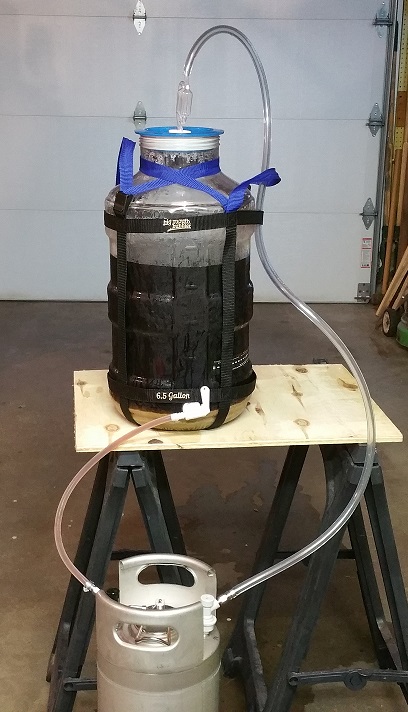
Cold crash will be hard for me, I usually do it in the keggerator since I ferment in keg. I never used bags before but I feel like it will be a clogged mess without one. I think I’ll try a closed loop with a water purged keg like the picture below. Then again the bag might get sucked into the spigot and clogg it anyway. Idk maybe I’ll just build one with a floating dip tubeView attachment 617694
A bag works fine.
Don’t listen to anyone who says not to.
Just make sure it’s big enough to let the hops swim around...and give the keg a good shake a couple times a day.
Get a keg lid with a tab underneath and use butchers twine...boil it first of course. This ensures the bag is secure.
Dental floss through the lid can fail.
And being suspended it can’t clog the dip tube when you transfer.
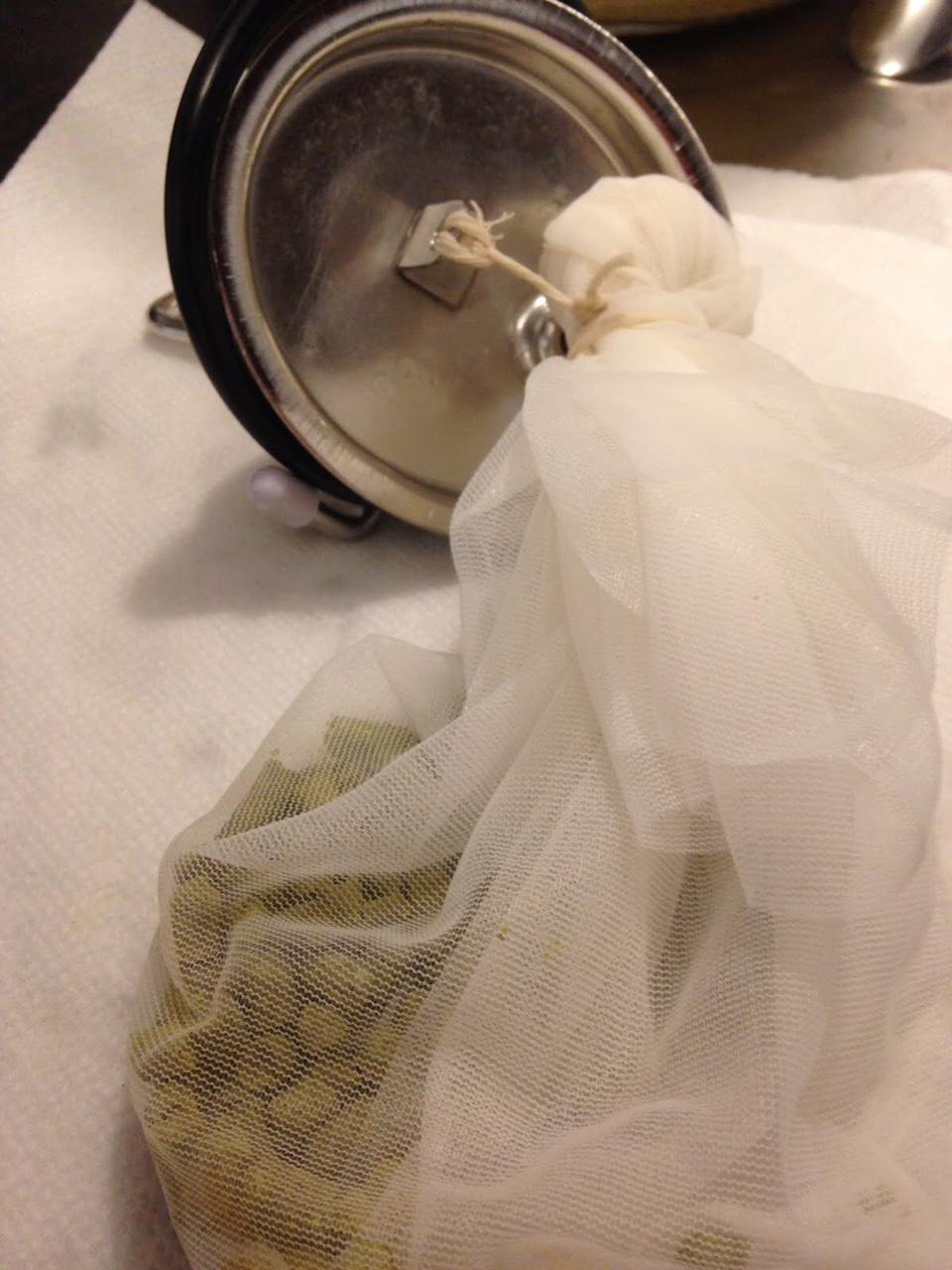
beervoid
Hophead & Pellet Rubber
Too bad there was no follow up after the commercial batch was brewed. Makes me wonder if it was not a success? Perhaps ended up with a lower fg.There's a lot of New England-influenced beers being brewing in Olde England at traditional British strengths these days - and below. In fact there's a bit of a mini-craze for hoppy "lunchtime" table beers at 2.8-3.2% from the likes of Cloudwater - the new milds? Here's a prize-winning homebrew that was intended for 1.031 but ended up at 1.036 : https://www.brewuk.co.uk/forums/viewtopic.php?f=9&t=51763
Northern_Brewer
British - apparently some US company stole my name
For you guys using fermonsters, are you bagging your dryhops? I usually ferment in kegs with a floating dip tube but I find myself needing to produce a full 5 gallons for some events. I was thinking about buying one with a spigot and pushing it out with co2. Anyone doing this?
Sorry didn’t see this fermonster statement before making my last post.
You could rig up some sort of bag hanger for that also...and use a pretty big bag for them to swim around.
There is really nothing like a clog during transfer to really p*** yourself off...it makes for a great day.
Last edited:
Has anyone tried taking an NEIPA recipe down to the 4-5% ABV range with good results (thinking of it for a party where people will be wanting to drink several pints)? I am interested in the malt bill you used and how much hopping before it goes astringent.
This is just about at 5%, simple, tasty, and a good start:
Emily Once Again...
2.5 Gallons
O.G. 1.046
F.G. 1.008
MASH:
80% (4 lbs. 11.1 oz.) 2-Row
15% (14.1 oz.) White Wheat
5% (4.7 oz.) C20
Mash at 152 F for 60 min
BOIL:
.55 oz. Warrior @60 min for 60 IBUs
.6 g whirlfloc at 5 min.
2.00 oz. Galaxy at flameout
FERMENTATION:
Wyeast 1318
DRY HOPS:
3 oz. Galaxy
WATER:
3 g. Gypsum
1.5 g. Calcium Chloride
1 g. Epsom salt
2 g. Table salt
Lactic acid for a 5.3-5.4ph and then some more preboil for a ph of 5.2.
Ferment and confirm ok with diacetyl test.
Cold crash to 55 or so for two days with gas providing a small amount of head pressure.
Then get it off the yeast and dry hop in the low 60’s for 2-3 days on head pressure.
Then package to carbonate and then cold condition.
One thing you may want to do is mash higher to get it to finish higher...I know people like them sweeter than I do.

Similar threads
- Replies
- 4
- Views
- 1K
- Replies
- 2
- Views
- 215
Latest posts
-
-
-
-
-
-
-
-
For Sale SS Brewtech - 7 Gallon Unitank 1.0
- Latest: IslandLizard











![Craft A Brew - Safale BE-256 Yeast - Fermentis - Belgian Ale Dry Yeast - For Belgian & Strong Ales - Ingredients for Home Brewing - Beer Making Supplies - [3 Pack]](https://m.media-amazon.com/images/I/51bcKEwQmWL._SL500_.jpg)






























